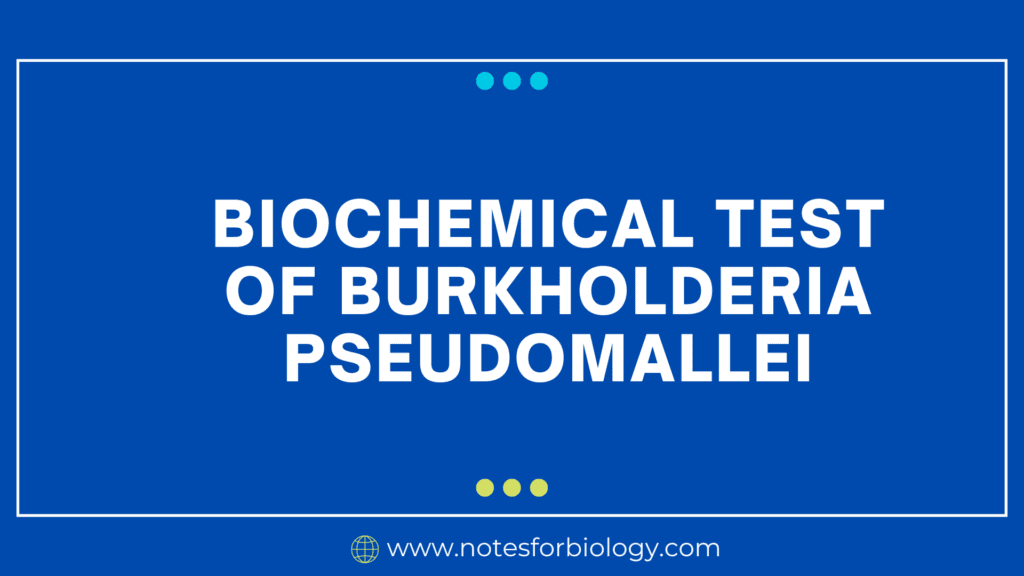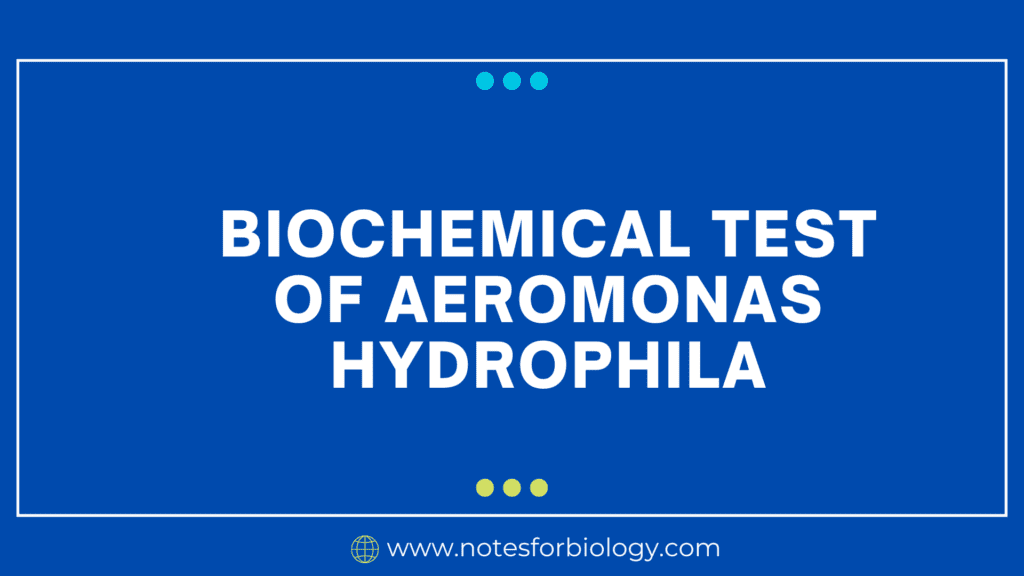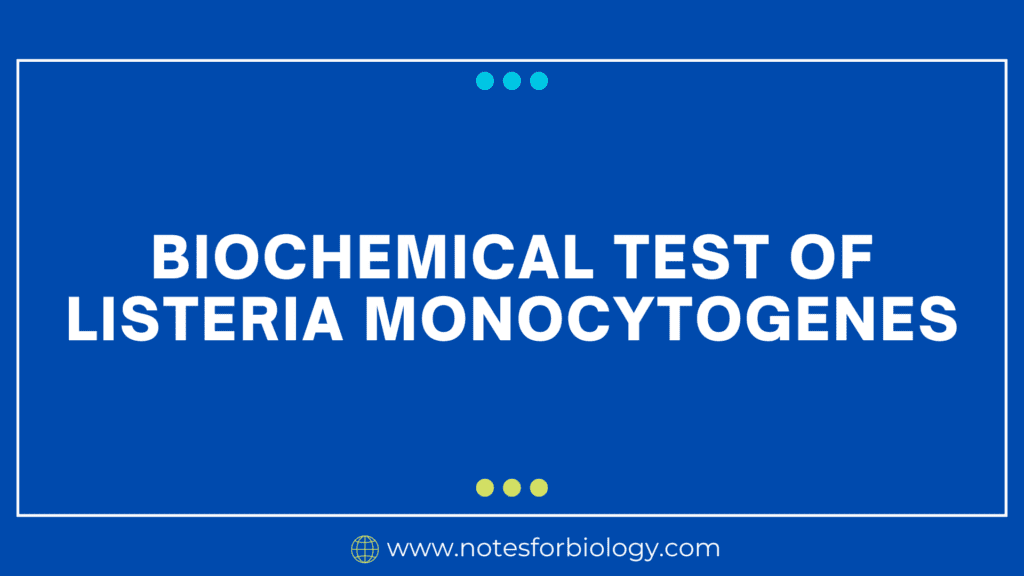Burkholderia pseudomallei is the bacterium rod-shaped, Gram-negative bacterium that causes melioidosis, a serious infectious disease. Numerous biochemical assays are used to identify this organism and help set it apart from other bacteria that are identical to it. These are the main Burkholderia pseudomallei biochemical assays.
Table of Contents
Burkholderia pseudomallei
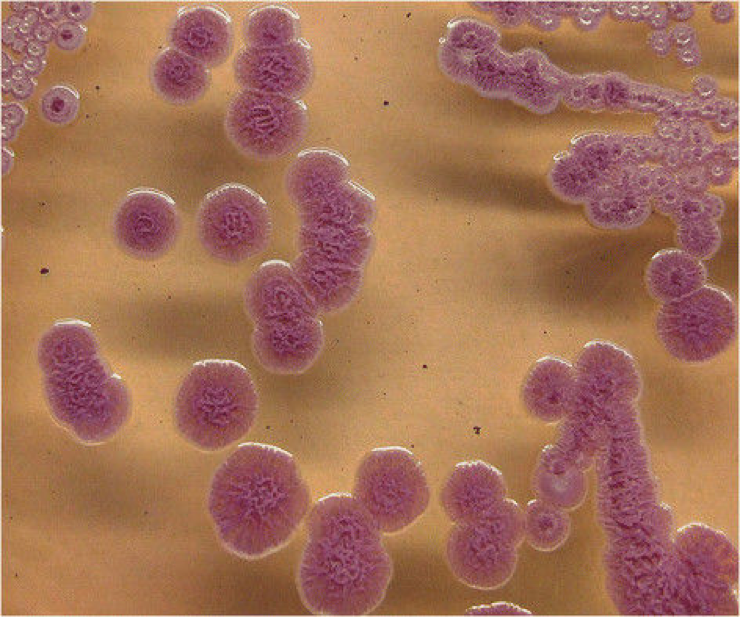
Biochemical Test of Burkholderia pseudomallei
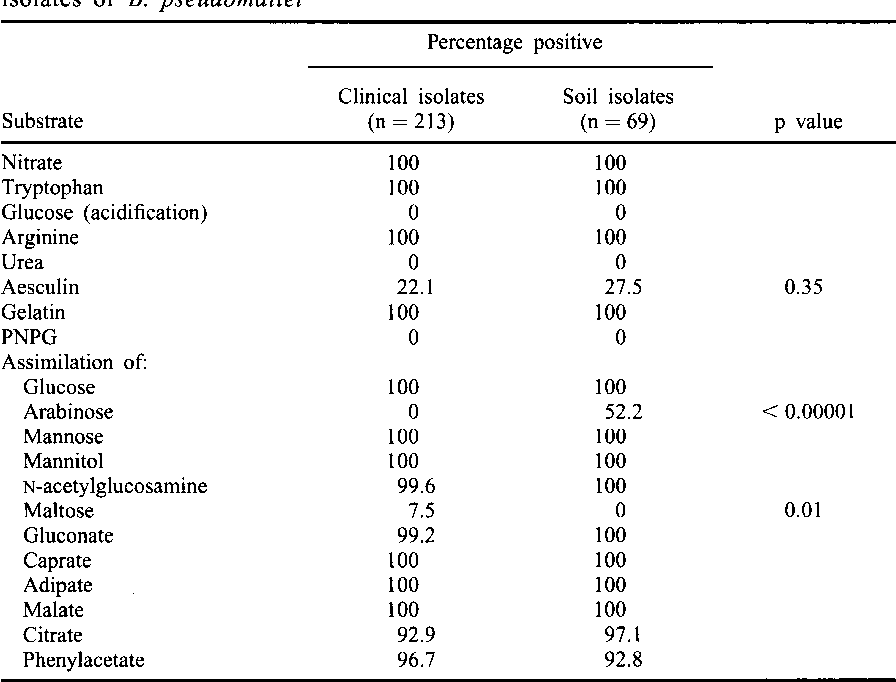
Gram Staining
- Result: Gram-negative (red/pink rods)
Oxidase Test
- The goal is to determine whether the cytochrome c oxidase enzyme is present.
- Positive outcome (purple color shift)
Catalase Test
- The goal is to ascertain whether the catalase enzyme is present.
- Positive outcome (bubbling when hydrogen peroxide is added).
Glucose Fermentation Test (Oxidative/Fermentative)
- Evaluation of the capacity to ferment or oxidize glucose is the goal.
- The outcome is oxidative, meaning that acid is produced in the open tube but not in the closed tube.
Indole Production Test
- Checking the capacity to synthesis indole from tryptophan is the goal.
- Result: Negative (Kovac’s reagent is added without causing any red coloration).
Methyl Red Test
- The goal is to identify stable acid end products that are produced during the fermentation of glucose.
- Outcome: Negative (neutral pH indicated by no red hue).
Voges-Proskauer Test
- The goal is to find out when fermentation of glucose produces acetoin.
- Negative (no red color after adding chemicals) was the outcome.
Citrate Utilization Test
- The goal is to ascertain whether citrate may be used as the exclusive source of carbon.
- Results: Positive (Simon’s citrate agar changes to a blue tint).
Hydrogen Sulfide Production (TSI Test)
- The goal is to identify when hydrogen sulfide is being produced.
- Findings: Negative (Triple Sugar Iron agar shows no black precipitate).
Urease Test
- Checking for urease enzyme production is the goal.
- Results: Negative (urea broth does not alter color).
Gelatin Hydrolysis Test
- The goal is to evaluate the gelatin’s hydrolyzability.
- Outcome: None (no gelatin liquefaction)
Lysine Decarboxylase Test
- Goal: To ascertain lysine’s capacity for decarboxylation.
- Results: Negative (lysine iron agar does not exhibit a purple hue).
Ornithine Decarboxylase Test
- The goal is to ascertain whether ornithine can be decarboxylate.
- Finding: None (the ornithine decarboxylase broth did not become purple).
Arginine Dihydrolase Test
- Goal: To evaluate arginine hydrolysis capacity.
- Alkaline pH change in arginine dihydrolase broth is a positive result.
Nitrate Reduction Test
- The goal is to ascertain whether nitrate may be reduced to nitrite or nitrogen gas.
- Result: Positive (reagents turn red when added, or there is no color change when zinc dust is added, suggesting gas production).
Motility Test
- The goal is to ascertain motility.
- Positive outcome (diffuse growth on semi-solid agar away from the stab line)
MacConkey Agar Growth
- The goal is to track lactose fermentation and growth.
- As a result, there is no lactose fermentation and the colonies seem colorless.
Summary
Oxidase, catalase, oxidative glucose metabolism, citrate utilization, arginine dihydrolase, nitrate reduction, and motility tests are usually positive for Burkholderia pseudomallei. Tests for hydrogen sulfide generation, methyl red, Voges-Proskauer, urease, gelatin hydrolysis, lysine decarboxylase, and ornithine decarboxylase are typically negative. It also thrives on MacConkey agar without lactose fermentation. Burkholderia pseudomallei in clinical samples can be recognized and confirmed thanks to these biochemical traits.
In order to accurately identify B. pseudomallei and set it apart from other bacteria in clinical and environmental samples, certain biochemical characteristics are crucial. Accurate identification is essential for both epidemiological monitoring of this infection and the successful treatment of melioidosis.
Knowing the biochemical profile of B. pseudomallei helps with timely identification and effective infection management, which ultimately improves patient outcomes and advances public health initiatives.
Frequently Asked Questions(FAQ)
Define Burkholderia pseudomallei ?
Burkholderia pseudomallei is the bacterium rod-shaped, Gram-negative bacterium that causes melioidosis, a serious infectious disease.
What biochemical test is used to identify Burkholderia pseudomallei?
The API 20NE test should be used to identify colonies with a Burkholderia phenotype further. It is advised to use PCR amplification of the small-subunit rRNA gene and RFLP analysis with different enzymes for ultimate confirmation of species identification.
How do you test for Burkholderia pseudomallei?
Any clinical material from which B. pseudomallei is identified by a culture-based approach is thought to be diagnostic for melioidosis. Blood, urine, throat swabs, and, when appropriate, respiratory specimens, abscesses, or wound swabs are the best specimens for culture.
What is the oxidase test for Burkholderia pseudomallei?
To find out if a bacteria generates a certain type of cytochrome c oxidase, perform an oxidase test.
Related Article

